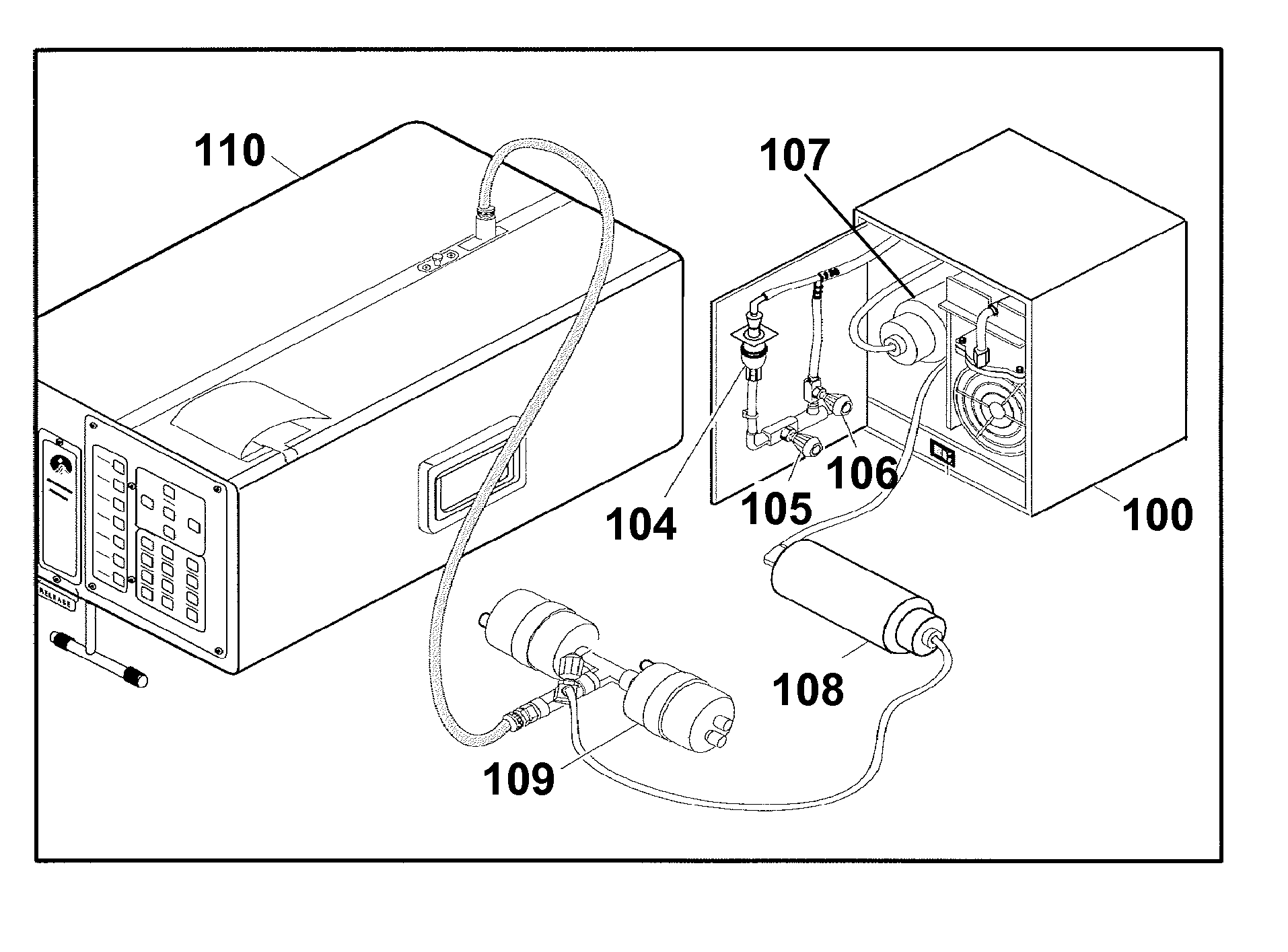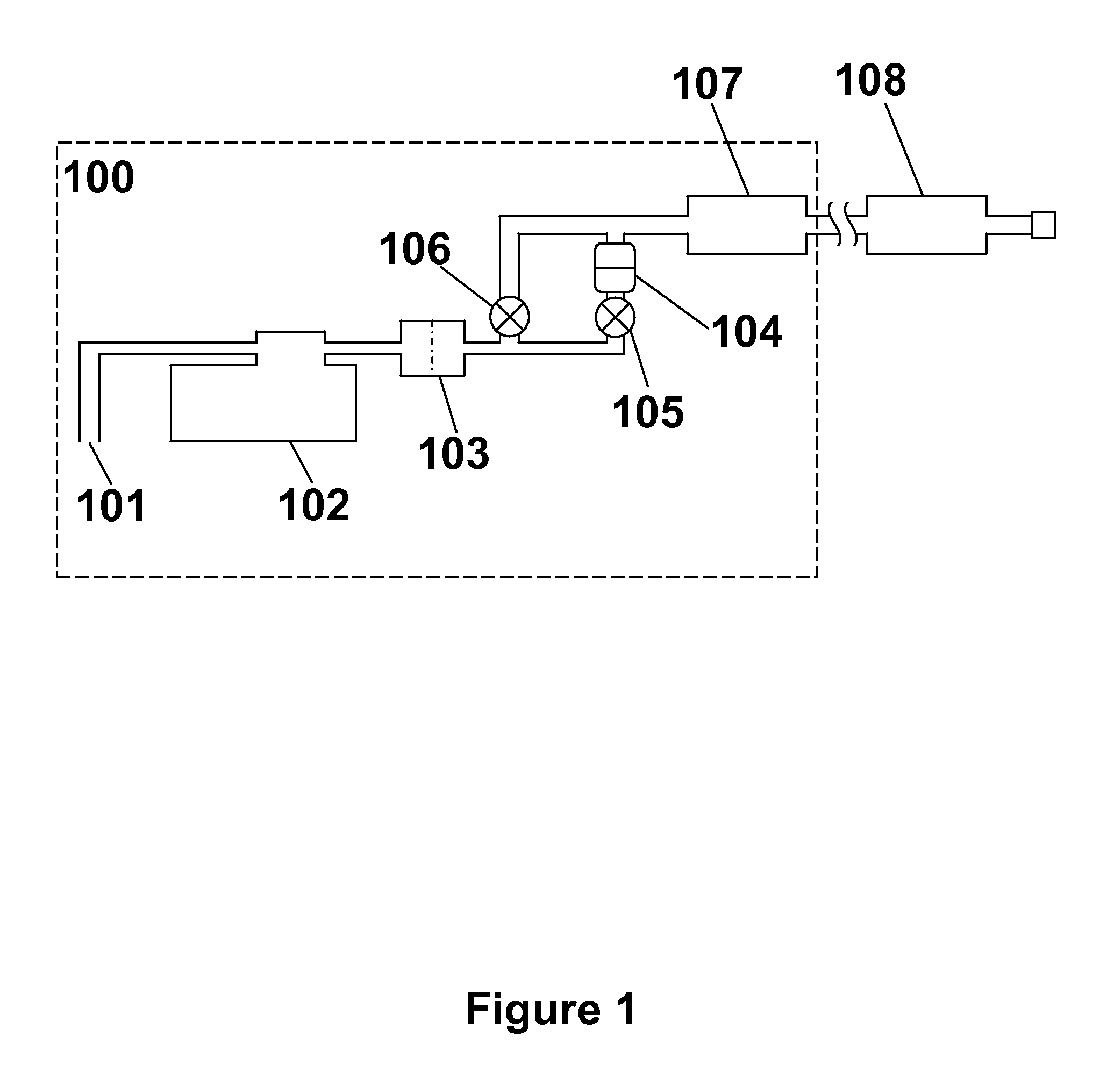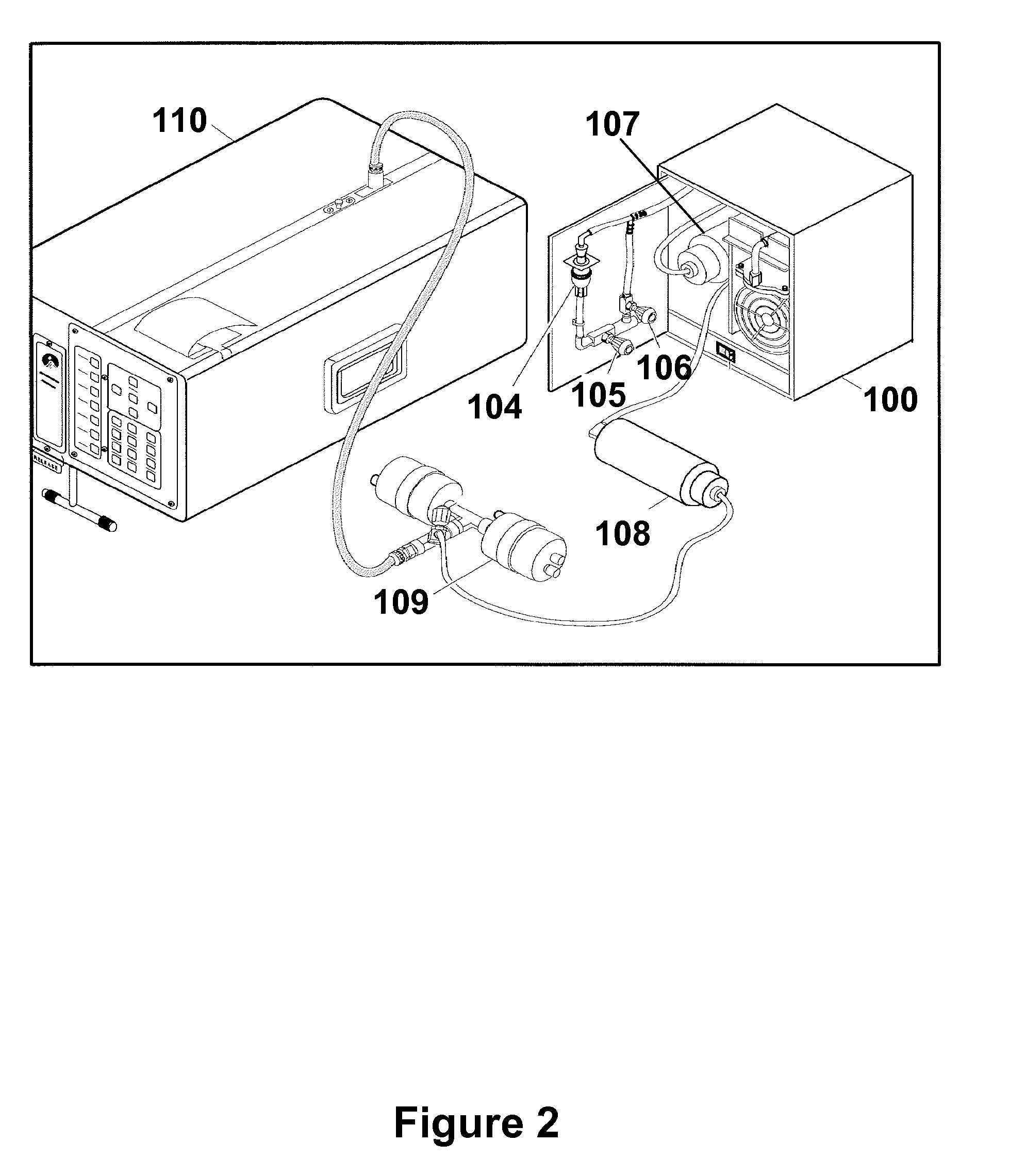System and method for calibration verification of an optical particle counter
- Summary
- Abstract
- Description
- Claims
- Application Information
AI Technical Summary
Benefits of technology
Problems solved by technology
Method used
Image
Examples
example 1
Portable Particle Counter Calibration Verification System
[0078]FIG. 6 details the major design features of an aerosol optical particle counter which detects particles based on scattered electromagnetic radiation. A laser source 601 including a laser diode 602 is generally employed to generate a laser beam 603 that is then shaped and focused by beam shaping optics 604 into an optical sample chamber 605. Ambient air is drawn into the sample chamber through an inlet jet 606 by the instrument's flow system. The inlet jet 606 shapes the sample air flow in order to ensure all of the air flow is passed through the laser beam 603.
[0079]When a particle is carried into the sample chamber 605 by the sample air flow, it scatters light energy as it passes through the laser beam 603. The scattered light energy is collected by the sample chamber's collecting optics (4 mangin mirrors 607 and retro-reflector mirror 608 in the example shown in FIG. 6) and focused onto a photodiode 609.
[0080]The photo...
PUM
 Login to View More
Login to View More Abstract
Description
Claims
Application Information
 Login to View More
Login to View More - R&D
- Intellectual Property
- Life Sciences
- Materials
- Tech Scout
- Unparalleled Data Quality
- Higher Quality Content
- 60% Fewer Hallucinations
Browse by: Latest US Patents, China's latest patents, Technical Efficacy Thesaurus, Application Domain, Technology Topic, Popular Technical Reports.
© 2025 PatSnap. All rights reserved.Legal|Privacy policy|Modern Slavery Act Transparency Statement|Sitemap|About US| Contact US: help@patsnap.com



